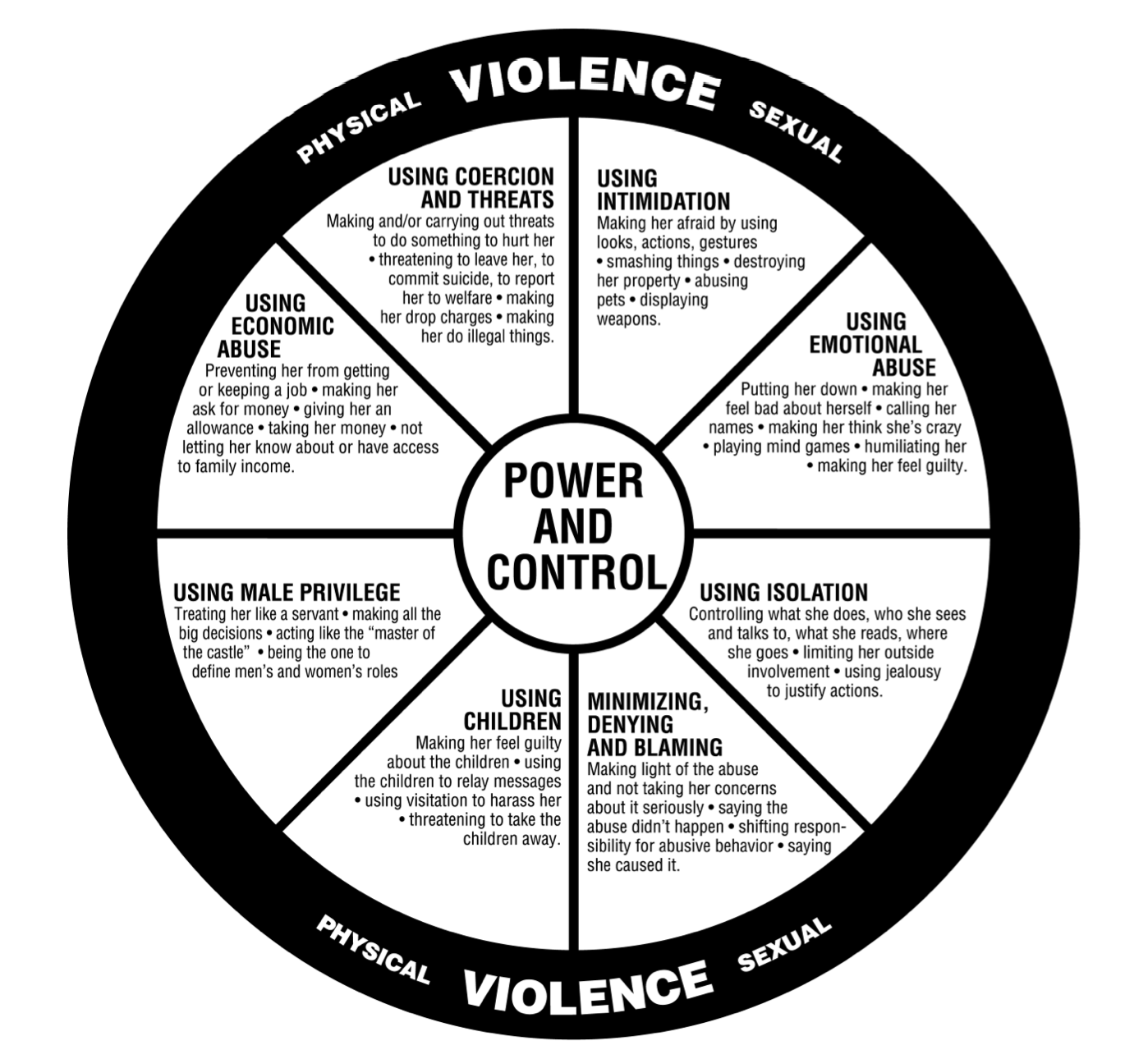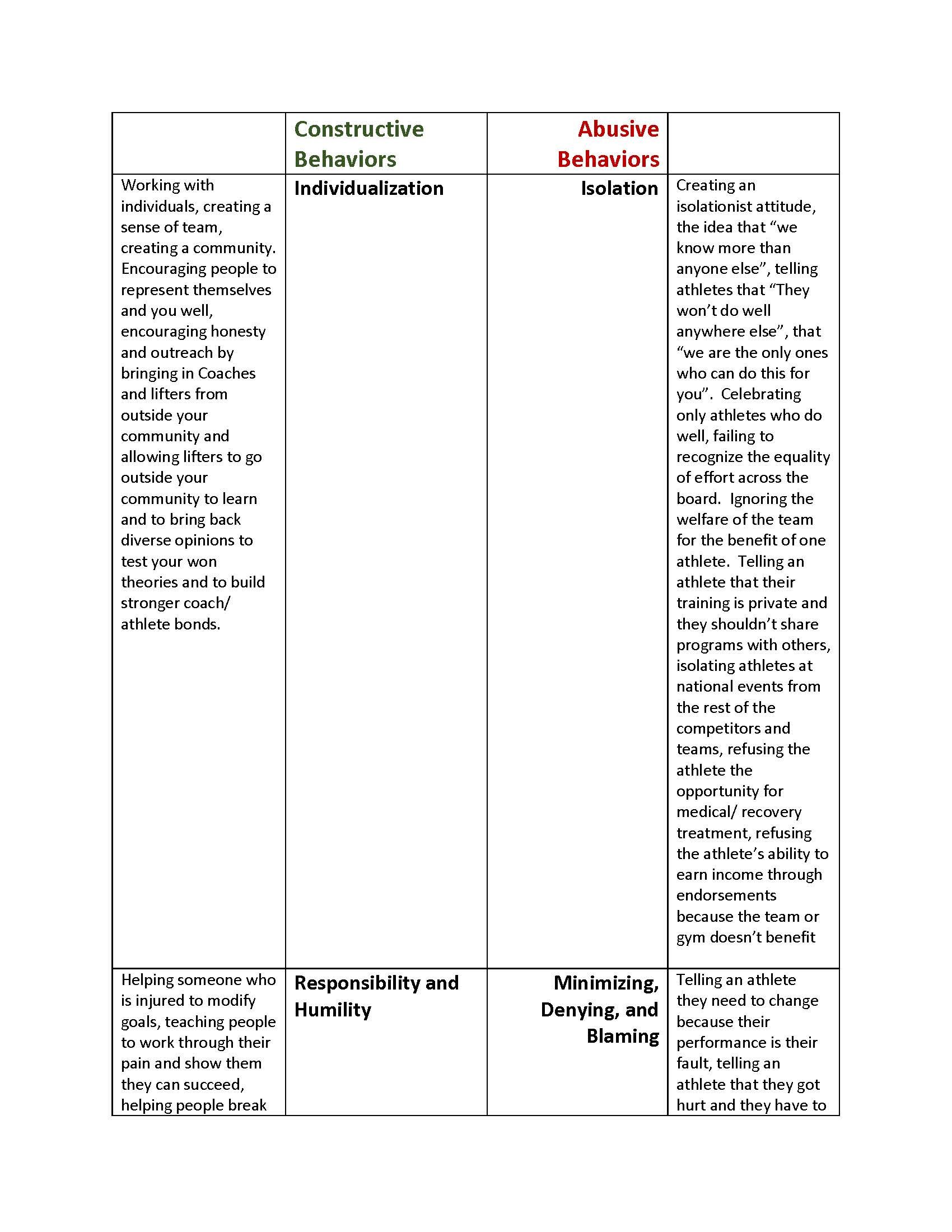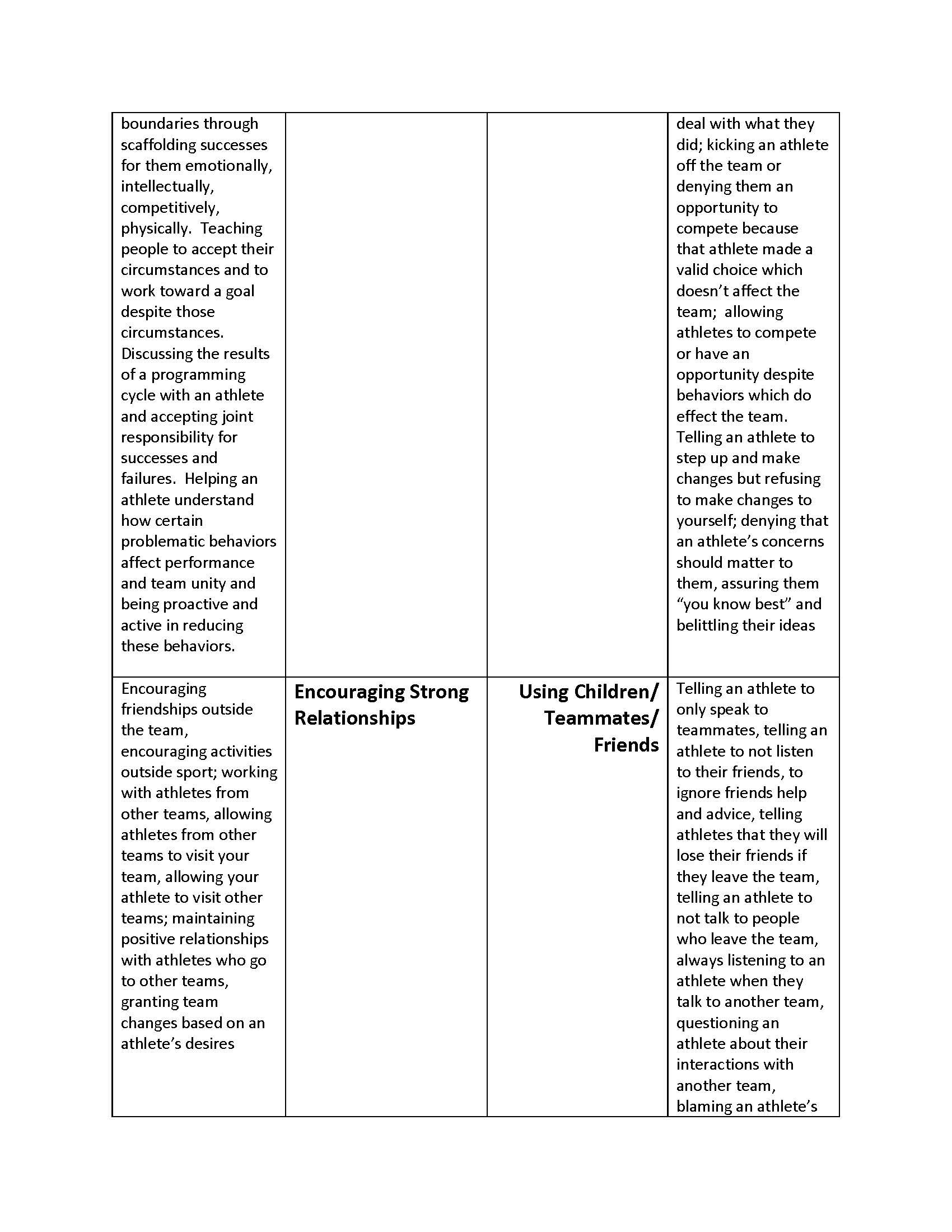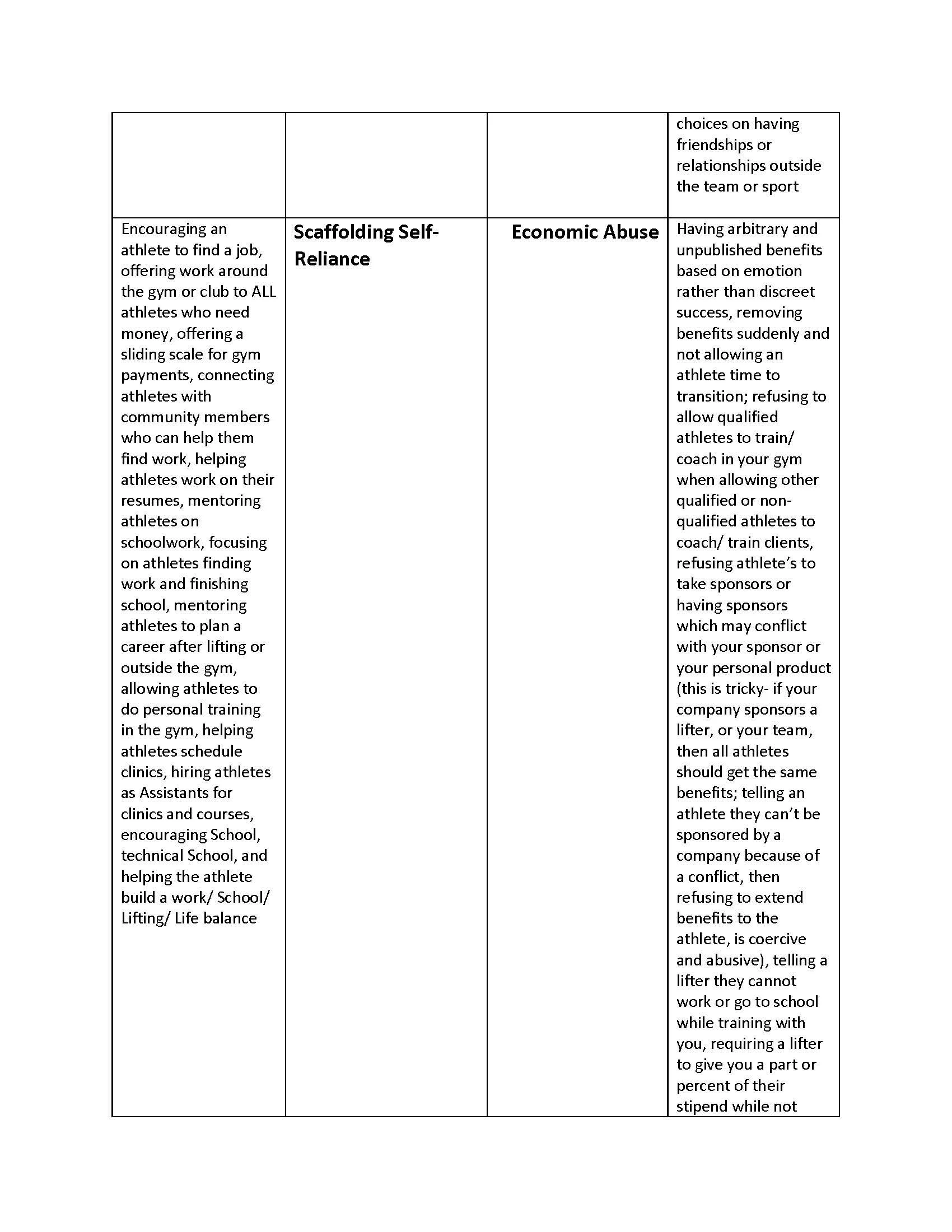Constructive versus Abusive Coaching
A McKenna’s Gym Blog
The attached image is the Power and Control Wheel published by The National Center on Domestic and Sexual Violence (4612 Shoal Creek Blvd., Austin, Texas 78756 www.ncdsv.org). This wheel speaks directly to when someone with control and power over individuals abuses that control and power. I’ve used it for over 20 years as a way to evaluate behaviors in myself and others and to help understand how authority and trust become abusive rather than constructive. I’ve applied these ideas specifically to coaching, and I’m writing this blog to help athletes and coaches understand when behaviors become problematic. Athletes have rights, and coaches have responsibilities. We know that sexual behaviors and intimidation cross ethical and moral lines, but other actions and behaviors create an imbalance in the relationship between a coach and an athlete. As the introduction to the wheel states, these “behaviors are less easily identified, but firmly establish a pattern of intimidation and control in the relationship.” We must not let our behaviors become hurtful to our athletes, and we must strive to find a way to help our athletes to grow as individuals. The left half of the chart describes general behaviors which we as coaches should engage in and use with our athletes. The right half speaks directly to behaviors which can contribute to an abusive or coercive coaching relationship.






